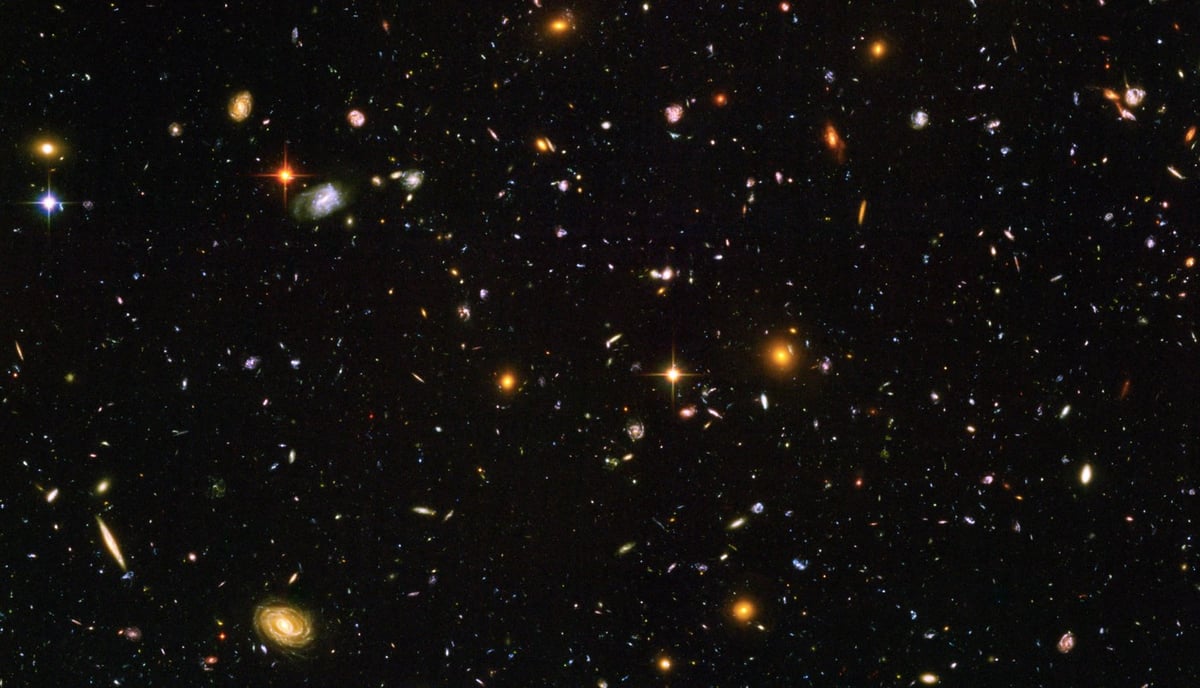The Universe has 10 times more galaxies than we thought

A recent paper claims that the Universe has 10 times more galaxies than we previously thought: an estimated 2 trillion galaxies covering every single patch of sky visible from the Earth. But that doesn’t mean the Universe is more massive or that it contains more stars. Phil Plait explains:
Now, let me be clear. This doesn’t meant the Universe is ten times bigger than we thought, or there are ten times as many stars. I’ll explain — I mean, duh, it’s what I do — but to cut to the chase, what they found is that there are lots of teeny, faint galaxies very far away that have gone undetected. So instead of being in a smaller number of big galaxies, stars are divvied up into a bigger number of smaller ones.
So how many stars are there in the Universe? The Milky Way contains about 400 billion stars. Some massive elliptical galaxies house more than 100 trillion stars. Estimates of the total number are rough, but it’s probably around 10^24 stars…that’s a septillion stars, a trillion trillion. It’s absurd that we’d be the only planet in the Universe with life on it.





Stay Connected